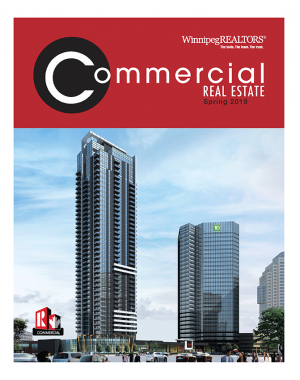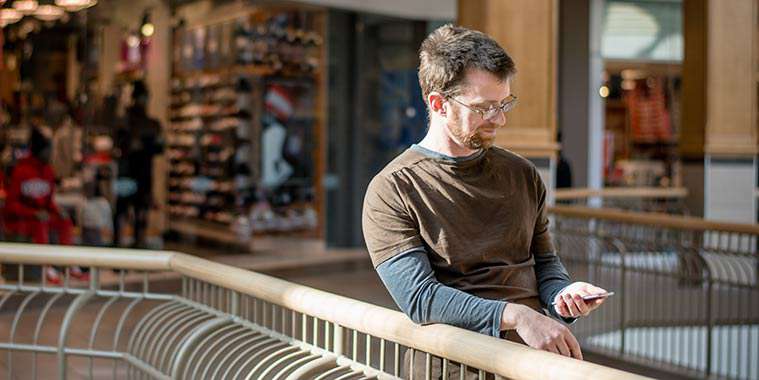by Kyra Winfield
It’s been a few years since the term “retailpocalypse” was coined, and I am shocked on a regular basis when people (who don’t work in retail) tell me how badly retail is doing.
Bad news gets views and it’s easy to see the headlines with the latest retailer to close, and to assume the retail market is tanking and taking down owners and investors with it. Retail is not in an apocalypse — it is going through an evolution and will only come out stronger.
Overall, national retail sales growth has been slowing as consumers’ disposable income is squeezed, but in terms of the market in Winnipeg retail rents have been holding steady and vacancy is decreasing. Here are five trends that explain what is happening in the retail market.
• Innovation: Target was a huge shock but we saw the Sears closures coming from miles away and they were in many ways a relief. Sears had every opportunity 20 years ago to become Amazon, instead of becoming the deteriorating anchor of malls it was in.
This is what is happening in retail: what worked 20 years ago won’t work today and the overriding theme is innovate or die. This isn’t a bad thing, but it’s been difficult and costly as retailers and owners decide what they are going to do with their businesses to move forward.
A great example of innovation in an established retailer is Staples, which had a fading model and is now rebranding as The Working and Learning Company, offering co-working space, cafés and thousands of business products and solutions.
• Food Halls: In my day, we called them food courts. The trend now is food halls, which unlike the fast food offerings of the past, are comprised of local and national tenants of various categories with many healthy options.
The food hall at the Forks Market is a fantastic example of this concept. A food hall is a gathering place for communal dining with options for everyone. Key to a food hall are value added experiences such as cooking lessons, mid-day yoga, and specialty grocers. And it has to feel authentic and be “Instagrammable.”
• Fitness: This trend is here to stay. Planet Fitness is the latest to our market offering a low cost entry level fitness experience. This largely competes with Netflix rather than any other gyms. Fitness is niching down to offer something for everyone —Crossfit, boot camp, spin, boxing, and traditional gyms which remain a staple for most people.
Fitness tenancies have become an integral part of retail, attracting consumers to properties on a frequent and regular basis. The evolution of fitness is the wellness experience, wherein developments benefit from being designed with wellness in mind. Public plazas, green spaces, and gathering places are key to attracting and retaining shoppers (for example, pop-up yoga outside at lunchtime). This was one of the main themes at ICSC in January.
• Millennials: Millennials and Gen Z are the influential generations of the moment and our retail properties must cater to them to thrive. Millennials have been very refreshing in their down to earth desire for community, authenticity and their value of experiences over things. This means, however, more careful consideration of their budget both financially and in terms of where they spend their time and attention. This has been part of the fuel behind co-working spaces and food halls.
Gen Z, however, is coming up and you better make sure every square foot of your property is Instagrammable. The flagship Hudson’s Bay on Queen Street in Toronto, for example, opened an exhibit called “The 7” which is free and solely comprised of Instagrammable surroundings including dinosaurs, unicorns, and rainbows. The first step to retail sales is to get consumers in the door.
• Mixed Use: Originally a buzzword, now the definition of most developments. Retail owners and developers are going to come out of this retail evolution as mixed-use owners and developers. In Winnipeg, we are embracing the mixed-use concept beautifully with True North Square. Mixed use developments are key for retail landlords to provide a community hub to bring consumers to the property and attract their spending. People are happy to shop at your centre if they can also meet friends for dinner, do errands at service-based businesses and work out. In dense areas, they are living and co-working on site as well.
Going forward we aren’t going to see retail shopping centre developments like we are used to, but we will see developments that combine multi-family/hotel/Airbnb, office/co-working, fitness, community spaces, and shopping/dining/services. True North Square hits this nail on the head.
A common response to these kinds of concepts is “easier said than done.” Fair enough, with such high construction costs, it is hard to find wiggle room. However, the owners and users who do design and build their properties and their spaces with community, wellness, and Instagram in mind (sad but true), will be the ones who evolve and stand out from the crowd.
(Kyra Winfield is the chair of the Commercial Division Executive Council of WinnipegREALTORS®.)



